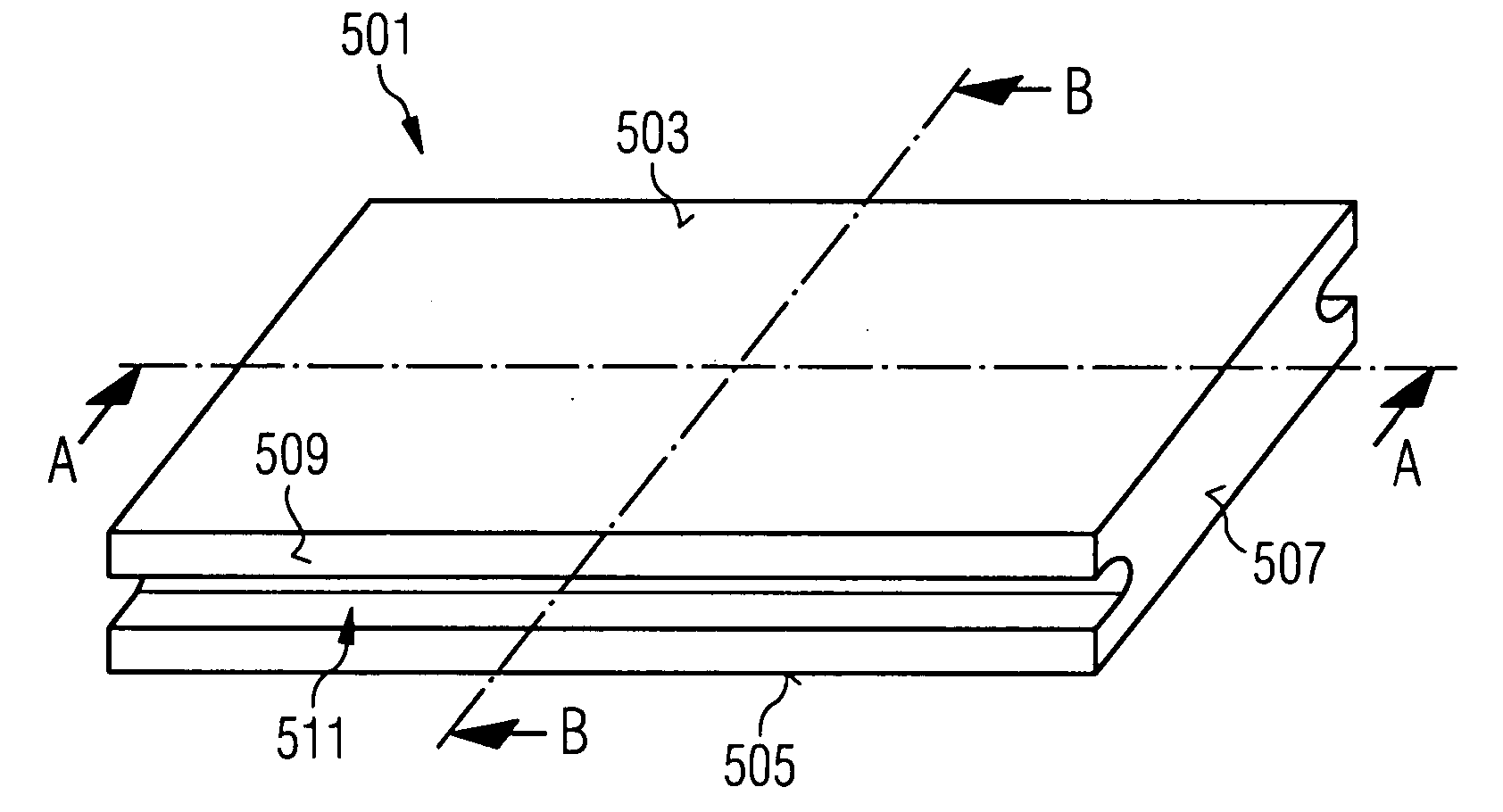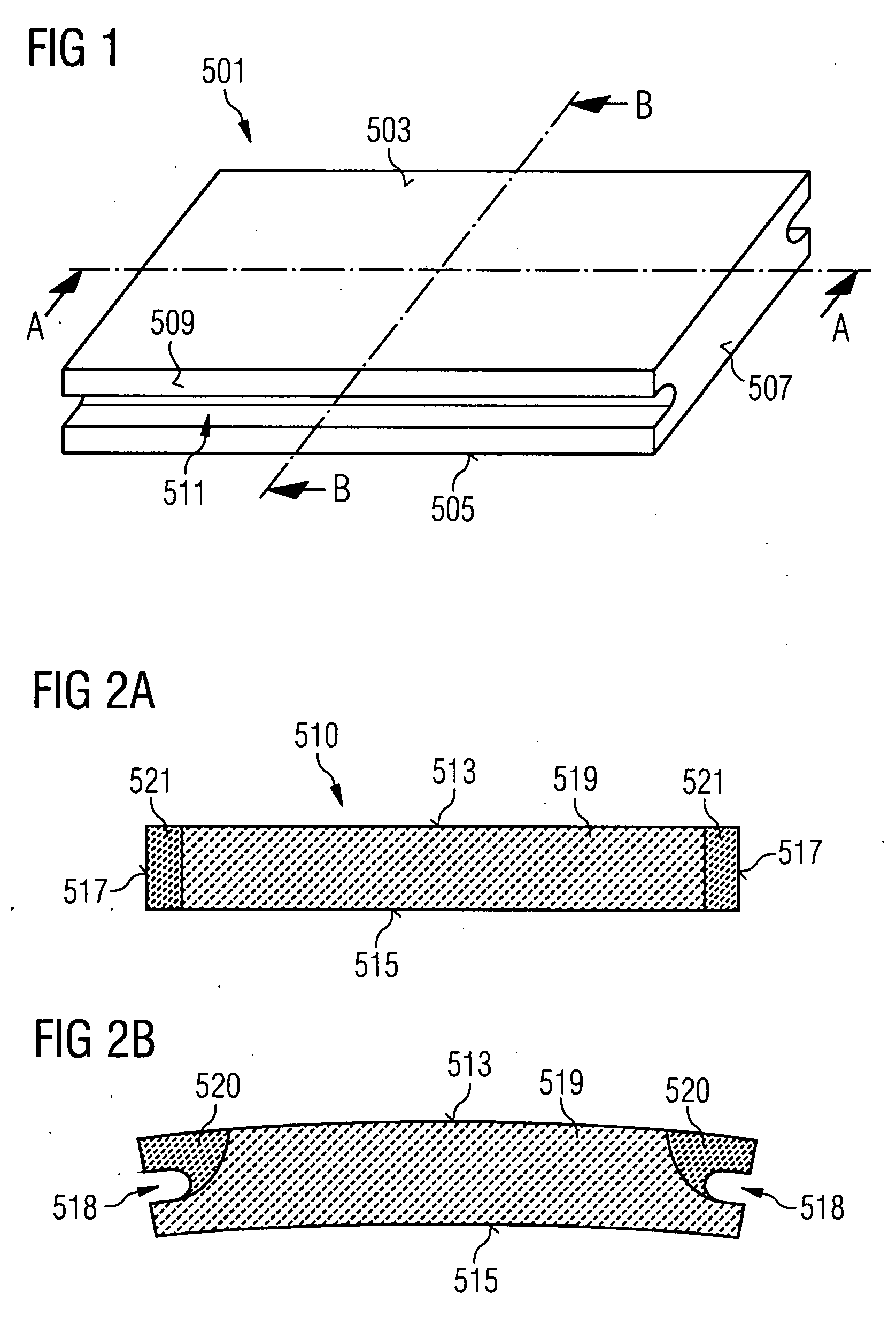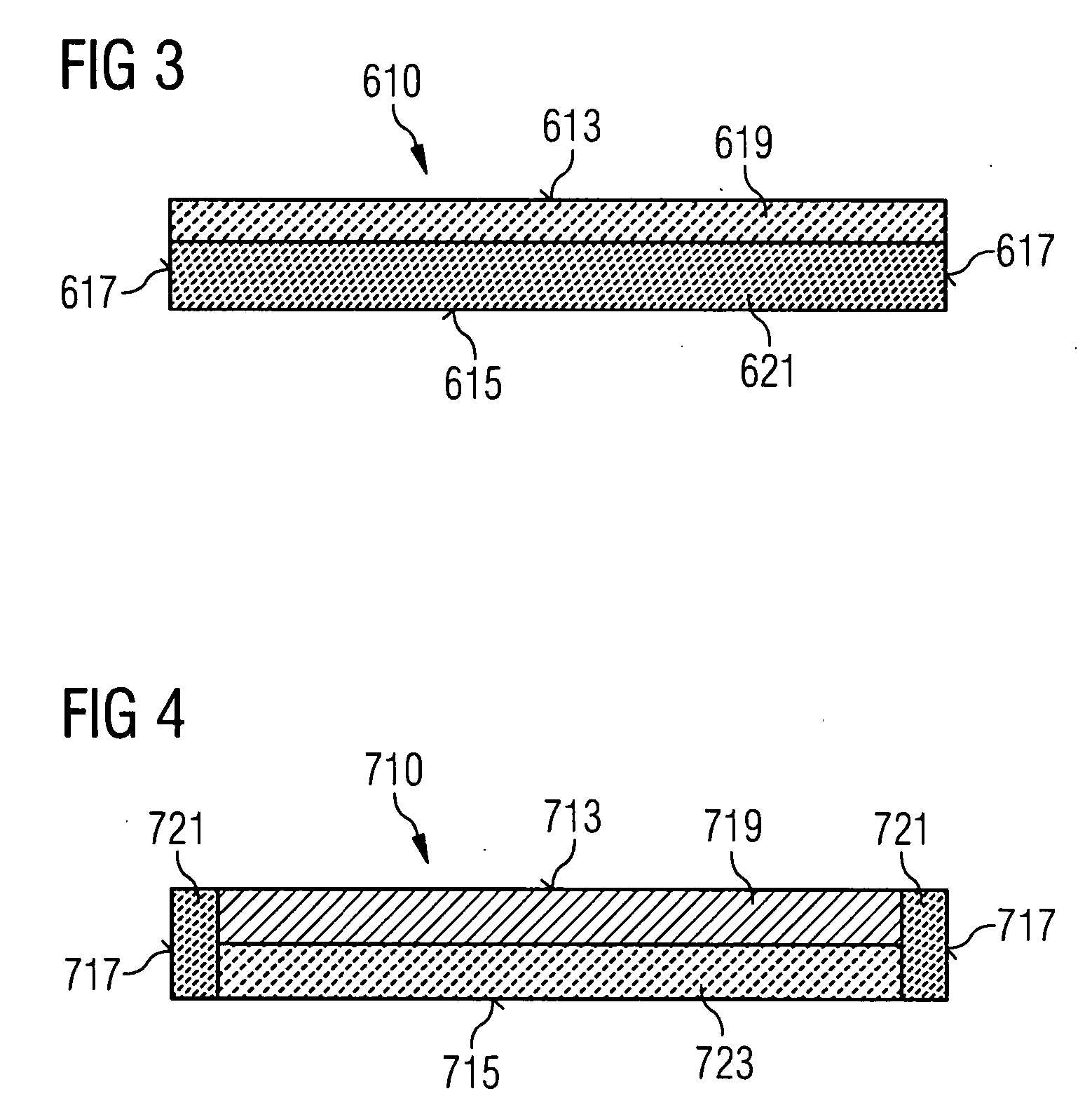Heat Shield Element, Method and Mold for the Production Thereof, Hot-Gas Lining and Combustion Chamber
a heat shield element and mold technology, applied in continuous combustion chambers, machines/engines, printing, etc., can solve the problems of affecting the service life forming cracks, and temperature gradients in the edge region of heat shield elements, so as to reduce tolerances, reduce labor intensity, and remove heat shield elements with ease
- Summary
- Abstract
- Description
- Claims
- Application Information
AI Technical Summary
Benefits of technology
Problems solved by technology
Method used
Image
Examples
second embodiment
[0081] the heat-shield element according to the invention is shown in section in FIG. 3. The section runs along the line A-A shown in FIG. 1. Correspondingly, the hot side 613, the cold side 615 and the ungrooved peripheral surfaces 617 of the heat-shield element 610 can be seen.
[0082] The heat-shield element 610 has on the hot side a material zone 619 with a relatively low coefficient of thermal expansion and / or relatively low thermal conductivity. On the cold side, it has a material zone 621 with, relative to the material zone 619 on the hot side, an increased coefficient of thermal expansion, increased thermal conductivity and / or increased mechanical loading capacity. Furthermore, the material of the material zone on the cold side is chosen such that it possesses a greater rigidity than the material of the material zone on the hot side. Less emphasis needs to be placed on the thermal resistivity of the material zone on the cold side than on the thermal resistivity of the material...
third embodiment
[0088] the heat-shield element according to the invention is shown in section in FIG. 4. The section runs along the line A-A shown in FIG. 1. Correspondingly, the cold side 713, the hot side 715 and the ungrooved peripheral surfaces 717 of the heat-shield element 710 can be seen. The heat-shield element 710 has a first material zone 719 on the hot side with a first coefficient of thermal expansion, second material zones 721 on the peripheral sides with a second coefficient of thermal expansion and a material zone 723 on the cold side with a third coefficient of thermal expansion. The second and the third coefficients of thermal expansion can also be identical. Through appropriate choice of the coefficients of thermal expansion of the individual material zones, stresses which arise due to temperature gradients in the interior of the heat-shield element 710 can reliably be minimized. The material zones can also have different rigidities.
[0089] Further combinations of material zones wi...
PUM
| Property | Measurement | Unit |
|---|---|---|
| coefficients of thermal expansion | aaaaa | aaaaa |
| operating temperatures | aaaaa | aaaaa |
| rigidity | aaaaa | aaaaa |
Abstract
Description
Claims
Application Information
 Login to View More
Login to View More - R&D
- Intellectual Property
- Life Sciences
- Materials
- Tech Scout
- Unparalleled Data Quality
- Higher Quality Content
- 60% Fewer Hallucinations
Browse by: Latest US Patents, China's latest patents, Technical Efficacy Thesaurus, Application Domain, Technology Topic, Popular Technical Reports.
© 2025 PatSnap. All rights reserved.Legal|Privacy policy|Modern Slavery Act Transparency Statement|Sitemap|About US| Contact US: help@patsnap.com



